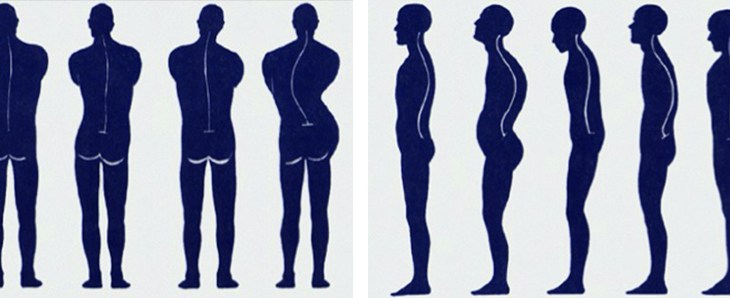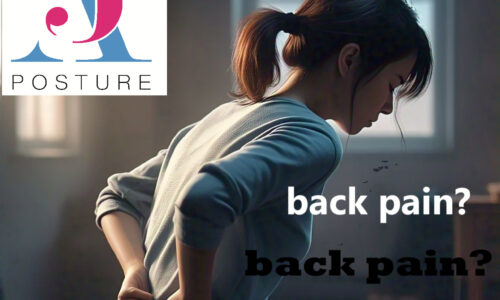
Definition of posturology.
Posturology or PNS (neuro-sensitive posturology) is a new discipline in the medical field, which became popular in the early 2000s. It is increasingly popular because the results are completely satisfactory and rapid, sometimes even immediate. . The effectiveness of this discipline is due to the fact that the treatment will be carried out mainly via the nervous system, which is hierarchically superior to the muscular or even bone system. When we work on the nervous system, we somehow address the central command and give it orders. Indeed, for movement to occur we need at least 2 bones. For movement to take place between two bones, we need muscles that fit into them. And for the muscles to function they need information, an order given by the nerves through nerve impulses. The nervous system is therefore essential and many things can be regulated and treated thanks to it.
Posturology is therefore a therapy that uses the nervous system. It is also a non-invasive therapy, therefore easy to access.
This discipline will also allow us to treat the cause(s) of the lesion rather than the consequence(s): the symptom itself. Thus, we can say that the posturologist has a holistic approach through his analysis and treatment, that is to say that he will take into consideration the entire body of the patient in his treatment. In practice, this means that to resolve a knee problem for example, the therapist will not necessarily work on the knee but elsewhere, at the head level for example. This does not exclude the fact that the therapist can also work on the knee. In fact, the therapist will go to work where the patient’s body indicates areas of tension. TIM (inter malleolar tests) or TIS (inter styloid tests), at the ankles or at the wrists, can highlight areas of tension, whether anterior, posterior, high, low tensions… The treatment areas of tension is done by informational manual therapy or TIM.
Posturology support.
The posturologist has a list of requirements concerning his patient. The latter must meet several criteria to have the “good posture diploma”. Unfortunately, as perfection does not exist, no one can have this diploma. Perfect posture is therefore only theoretical. What the posturologist wants is to improve the posture of his patient, to bring him, to tend him towards a perfect posture knowing that this is not possible. This is why everyone is concerned. The posturologist will therefore take stock of the patient’s current posture and the objective will be to improve it. To do this, a series of tests will be established.
The diagnosis represents a large part of a postural assessment because before starting the treatment, the therapist will establish a series of tests:
1 – Unipodal balance test, on one foot: If we have poor quality unipodal stability, therefore we have unipodal instability, then above, at the level of the pelvis for example, there will be a big work to be done at the muscular level to stabilize, keep, maintain a correct balance. After a while, the pelvis will no longer be able to do its job correctly, will no longer be able to manage, so it will tire and pain will certainly appear… Unipodal instability can also explain why some patients have pain rather in end of the day because with each step, the whole body moves enormously.
2 – Footprint on stabilometry platform: Ideally, the footprint should be symmetrical, with a load distribution of 50% between right and left and a load distribution of 60% of body weight on the heels and 40% of the body weight on the forefoot. Of course, a patient can have 60% of their body weight on the forefoot and still have good posture. The practitioner will not necessarily correct this, it is just something to take into account. The practitioner will pay more attention to ensuring that the distribution of left/right loads is balanced as much as possible (coming closest to 50/50) because the activity that we practice the most is walking and walking is symmetrical activity.
3 – Test of oscillations on a stabilometry platform: We want to know how the body moves when it does not move for a certain time, namely 10 seconds. Indeed, our body is a bit like an inverted pendulum, we oscillate all the time to maintain balance, with an angle of 4° in relation to the 2 fixed points that are our feet. This is completely normal, we always adjust our posture to optimize our energy. On the other hand, if we oscillate too much, then this can create complications, a significant energy cost.
4 – Test of the asymmetries of the different belts: It is important that our body tends to have the same symmetry between left and right, because asymmetries will result in compensations which in the long term can result in complications… It is therefore essential to check the good symmetry of the body especially with regard to rotations and this, at the different levels which are the pelvic (pelvis), scapular (shoulders) and cervical girdles. Having a bilateral range of motion restriction is not that serious in itself as long as symmetry is respected. We can add the pedal convergence and diverge test (the patient will be lying on the examination table for this test) which will actually tell us about the tone of the hip rotator muscles: we push on the heads of M1 (the 1st metatarsal, in the region of the big toe) outwards to test external rotation and we push on the heads of M5 (the 5th metatarsal, in the region of the little toe) inwards to test internal rotation.
5 – Mobility tests: With the patient on the examination table in supine position (on his back), we will test mobility and rebound in the ankles, knees, pelvis, hypochondrium (ribs) and shoulders. If an item is blocked, we will want to restore mobility.
6 – TIM and TIS tests: The practitioner will test the areas of tension in the body allowing him to know which areas to work on. The tensions can be: high/low, front/back, right/left. Once the areas of tension have been determined, all that remains is for the practitioner to look at this area to specify which nerve should be stimulated.
Obviously, many other tests can be used depending on the cases and reasons for consultation.
The objective of the posturologist will be above all to improve unipedal balance, reduce oscillations, restore joint range in areas with asymmetries, restore mobility, rebound and reduce tension. In short, the objective is to give patients back the ability to compensate. Once this is done, the practitioner can return to the symptom, the reason for consultation and see if the pain has reduced or even disappeared.
To move towards this objective, the treatment will be carried out by informational manual therapy (IMT) and also with very thin posture insoles if treatment by manual therapy is not sufficient.
Manual therapy and posturology treatment is the result of a mixture of many disciplines. The posturologist will therefore use PNS techniques, podiatry, TCM (traditional Chinese medicine), kinesiology, muscular chains, kinesio tapping, motor preferences, archaic reflexes, sinokinetic mediation, etc.
Conclusion.
Our body has a natural capacity to compensate and fortunately because if every time something happens to us we don’t know how to cope, we don’t know how to adapt, we wouldn’t get old. We therefore know how to compensate naturally but we do not know how to naturally release an area which has been traumatized for example. We know how to protect ourselves reflexively, but we do not know how to relax automatically. Posturology, thanks to manual therapy and possibly insoles, has the role of allowing us to relax reflexively. We can say that posturology is a bit like a glass of water: every time something happens to us in our life (a sprain, a fall, etc.) we put a little water in our glass ( we compensate naturally) until the water in the glass overflows and then, we no longer know how to compensate, pain appears…. Posturology allows us to remove as much water as possible from the glass and thanks to this, we once again have a compensatory capacity.


